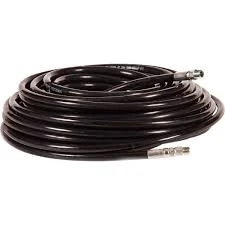repair power steering hose
Repairing Power Steering Hose A Comprehensive Guide
Power steering is an essential component of most modern vehicles, providing the driver with enhanced control and ease when steering. However, like any mechanical system, it can experience issues, particularly with its hoses. One common problem many vehicle owners face is a malfunctioning power steering hose. Whether due to wear and tear, leaks, or physical damage, repairing the power steering hose promptly is critical to maintaining your vehicle's handling and reliability.
Understanding the Power Steering Hose
The power steering hose is crucial in transporting hydraulic fluid from the power steering pump to the steering gear. As the hydraulic fluid flows through the hose, it helps exert necessary force, making it easier to turn the steering wheel. Typically made of durable rubber or steel, power steering hoses can wear out over time due to exposure to heat, pressure, and other environmental factors.
Symptoms of a Failing Power Steering Hose
Before diving into repairs, it's essential to recognize the symptoms of a failing power steering hose. Common indicators include
1. Fluid Leaks One of the first signs of a problem is fluid leaking beneath the vehicle. A power steering fluid leak often appears as a sticky, reddish-brown liquid. 2. Whining Noise If you hear a whining or squealing noise when turning the steering wheel, it may indicate low fluid levels or air trapped in the system, possibly linked to a damaged hose.
3. Difficulty Steering If you notice that steering has become stiff or requires more effort, it could signal a failing power steering hose causing reduced fluid flow.
Steps to Repair a Power Steering Hose
repair power steering hose

1. Safety First Before starting any repairs, ensure the vehicle is parked on a level surface, and the engine is off. Always wear gloves and safety glasses.
2. Identify the Problem Inspect the power steering hose for visible cracks, bulges, or signs of leaking fluid. Check both the high-pressure and low-pressure hoses.
3. Remove the Damaged Hose If replacement is necessary, start by disconnecting the negative battery terminal to avoid any electrical issues. Then, use the appropriate tools to remove the nuts or clamps securing the hose. Carefully detach the hose, ensuring no additional fluid spills.
4. Install the New Hose Obtain a replacement hose that matches the damaged one. Installation is typically a reversal of removal; connect the new hose to the power steering pump and steering gear, securing it with the appropriate hardware.
5. Refill Fluids Once the new hose is in place, refill the power steering fluid through the reservoir cap. Make sure to use the recommended fluid type for your vehicle.
6. Test the System Start the engine and turn the steering wheel from lock to lock a few times to distribute the fluid and eliminate air bubbles. Check for leaks around the new hose.
Conclusion
Repairing a power steering hose is not only crucial for vehicle safety but can also enhance driving comfort. By recognizing the symptoms of a failing hose and understanding the repair process, vehicle owners can save time and money while ensuring their power steering system operates smoothly. Regular maintenance checks can help catch potential issues early, prolonging the life of your power steering components. Always consult a professional mechanic if you are unsure about any steps in the repair process.
-
Ultimate Spiral Protection for Hoses & CablesNewsJun.26,2025
-
The Ultimate Quick-Connect Solutions for Every NeedNewsJun.26,2025
-
SAE J1401 Brake Hose: Reliable Choice for Safe BrakingNewsJun.26,2025
-
Reliable J2064 A/C Hoses for Real-World Cooling NeedsNewsJun.26,2025
-
Heavy-Duty Sewer Jetting Hoses Built to LastNewsJun.26,2025
-
Fix Power Steering Tube Leaks Fast – Durable & Affordable SolutionNewsJun.26,2025

